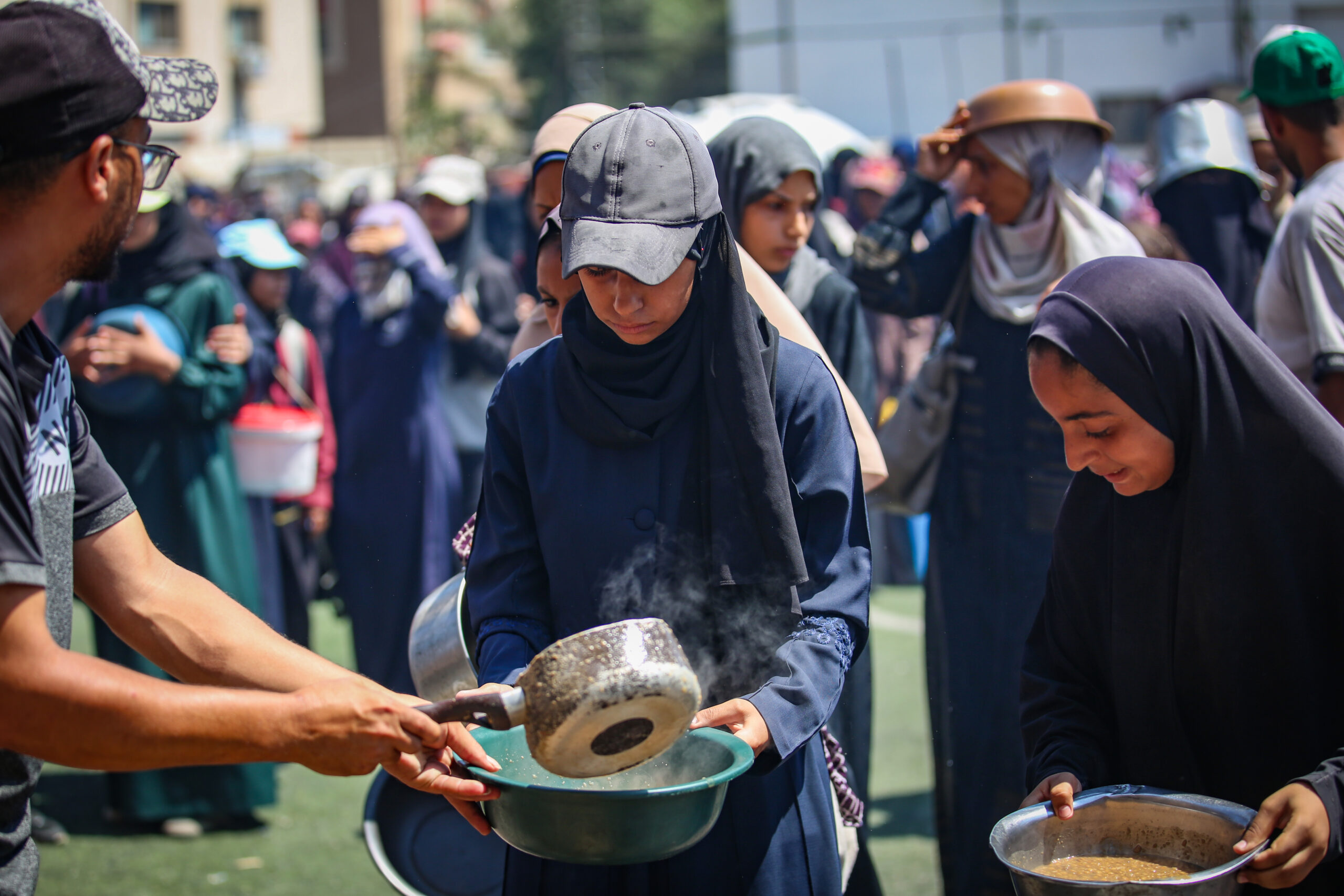In the fog of war, truth often becomes the first casualty. Nowhere is this more apparent than in the digital battlefield surrounding the Israeli-Gaza conflict, where viral photos are increasingly being deployed not as documentation, but as weapons in an information war. A recent surge of emotionally charged images purporting to show starving children or famine-stricken civilians in Gaza has captivated global audiences. But investigations by watchdog groups and independent researchers have revealed a troubling pattern: many of these photos are old, misleading, or entirely unrelated to the situation they claim to depict.
In his article “The Truth Behind the Viral Gaza Famine Photo”, researcher David Collier examined a photo widely circulated on social media that appeared to show an emaciated Palestinian child suffering from extreme hunger. The image was shared alongside claims that Israel was deliberately starving Gaza’s population as an act of genocide.
The photos were taken by the Gaza-based photographer, Ahmed Jihad Ibrahim Al-arini, and uploaded to his Instagram account on 22nd July – a day before the Express splashed it across their front page. But another Gaza-based account, Saeed Mohammed, had shared similar images even earlier.
Within hours, almost every major outlet was using the image to blame Israel for the famine in Gaza. Sky News, CNN, The Guardian, Daily Mail, New York Times, and The Times (UK) – they all ran with it, reinforcing the message: Gaza is gripped by mass starvation, and this image is the proof.
Unpublished pictures show Mohammed’s healthy brother Joud, who was born on 18 April 2022 and is 3 years old. Mohammed was born on 23 December 2023, just two months after October 7. Both Mohammed’s mother and his older brother look healthy and are not suffering from any type of starvation. The published images in all the various news broadcasts and publications have either been deliberately cropped to remove the image of the healthy brother, blurred him into obscurity, or the journalists have only chosen to use photos in which the brother is not visible at all.
Muhammad Zakariya Ayyoub al-Matouq /Mutawwaq was born with serious genetic disorders. He has needed specialist medical supplements since birth. Like previous examples of the media using ‘starving children’ going back to summer 2024, the image is of a child suffering from underlying (and hidden) health issues.
A medical report issued in May 2025 by the Basma Association for Relief in Gaza states that Mohammed has been diagnosed with cerebral palsy – a group of neurological disorders affecting movement, muscle tone, and posture. The report notes that Mohammed suffers from hypoxemia (low oxygen in the blood), possibly linked to a suspected genetic disorder inherited in an ‘autosomal recessive pattern.’
The story being told through legacy media outlets such as the NYT is that Mohammed’s father was killed while going out to collect food. From online sources, it turns out that Mohammed’s father was killed in Jabalia, in what appears to be a targeted strike on ‘al Qassabeeb’ street. We can also see that Hamas was attacking the IDF in precisely that spot at the time (posts from 26 & 27th October). Between the 25th of October and the 29th, Israel lost six soldiers in the area.
Collier’s investigation found that the image was used out of context, lacking any confirmed date, location, or original source. Further research suggested that the child may have suffered from a medical condition unrelated to a systemic famine. “This image was used as a propaganda tool,” Collier wrote, “stripped of context and truth.” Instead of evidence of genocide, the photo was a clear case of narrative manipulation—designed to shock, rather than inform.
“And here’s the bitter truth: I shouldn’t have to do this,” Collier wrote. “It shouldn’t fall on me to call out the world’s biggest media outlets for their failure to act like journalists. Why are almost all of them functioning as Hamas’ useful idiots, amplifying propaganda with no effort to verify the facts? Is it really too much to expect them to do their jobs?
“There’s another layer of cynicism here. From everything I’ve learned, Mohammed’s mother is simply trying to find help for her child. She’s not hiding the truth. She tells the full story to anyone who asks. Yet every journalist who has spoken to her has made the same cynical decision: ignore the medical reality, strip the context, and turn her child into a propaganda weapon. No one is trying to help. No one is interested in telling the truth. All they seem to ask is: “How can this image hurt Israel?” — and they build their coverage around that.”
An article in DW News, a German public state-owned international broadcaster Deutsche Welle, revealed that several images circulating online claiming to depict the dire conditions in Gaza are, in fact, generated by artificial intelligence. One picture of two boys wearing identical pajamas and huddled together under a turquoise blanket in a blue tent has been seen millions of times. The circled sections highlight evidence of AI use
The report continues to analyze several other altered images.
Media watchdog CAMERA‑UK highlighted another troubling incident in its July 27 report, “BBC World Service Uses Two‑Month‑Old Photo to Promote a Narrative.” The article documented how the BBC aired a photo of a Gaza resident taken two months earlier by a photographer called Haitham Imad, presenting it as if it were a current image. While the photo itself was authentic, its reuse without proper attribution or date amounted to a deceptive editorial decision.
The BBC presented the photo as an example of famine in Gaza while failing to explain that the subject, 5-year-old Osama al-Raqab, was suffering from cystic fibrosis, which has worsened since the start of the war due to the lack of meat, fish, and enzyme tablets to help him digest food. He was being treated at the malnutrition clinic in Nasser Hospital, Khan Younis. Osama al-Raqab was one of seventeen children (see from 04:52 here) who were evacuated from the Gaza Strip on June 10th via Eilat – as reported by the BBC at the time – to receive medical treatment in Italy. The good news is that Osama al-Raqab’s condition has since improved.
This is what a modern blood libel looks like:
— Israel Foreign Ministry (@IsraelMFA) July 28, 2025
A sick child. A hijacked photo. A lie that spreads faster than truth.
His name is Osama al-Raqab. He has cystic fibrosis, a serious genetic illness.
He’s been in Italy receiving treatment since June 12. Israel enabled his medical… pic.twitter.com/Sh8UBK3HVh
CAMERA criticized the BBC for contributing to the false perception that famine in Gaza is worsening in real-time, without contextualizing that thousands of aid trucks had entered Gaza, according to multiple independent sources. The watchdog also noted that the BBC failed to engage with critiques of the UN’s famine assessments, which often rely on unverifiable data supplied by Hamas-affiliated actors.
A third investigation by HonestReporting, titled “Another Photo, Another Lie” (July 2025), also detailed the false reporting and deceptive use of images by mainstream media. Turkey’s state-run Anadolu Agency, Daily Express, NBC News, The Guardian, The New York Times, The Daily Mail, and even BBC News, also used the now infamous photo of Muhammad Zakariya Ayyoub as an example of famine caused by a fictitious Israeli blockade.
“There is no blockade, there is no siege, and there’s no limit to the amount of aid Israel is allowing into Gaza,” Honest Reporting wrote. “There are 800 trucks waiting on the border. At least 70 had to be destroyed due to expiring goods. Prior to the war, Gaza received ≈73 trucks of food aid per day.
“Instead of directing your anger toward a blockade that doesn’t exist, we urge you to call out the @unitednations to do everything it possibly can to distribute the hundreds of truckloads of aid that already exist in Gaza.”
Honest reporting has revealed that many dramatic images circulated online are either recycled from previous conflicts, misattributed, or deliberately edited to mislead viewers. One notable case involved a former UN media officer who posted a photo of a dust-covered child with the caption blaming Israel for the destruction. The photo was later traced to a 2018 airstrike in Syria.
The article offered a helpful “credibility checklist” for readers:
- Who posted the image?
- When and where was it taken?
- Has it been cropped, filtered, or stripped of surrounding context?
HonestReporting’s analysis concluded that some images are generated by AI. But while many images are technically real, they are often repurposed to support political narratives, particularly those that accuse Israel of orchestrating mass starvation or genocide.
BREAKING: The New York Times has admitted that the Gazan child they plastered on the front page as malnourished was actually suffering from pre-existing health issues.
— Eyal Yakoby (@EYakoby) July 29, 2025
Once again, they spread propaganda to the world—then quietly walk it back after the damage is done. pic.twitter.com/a8F4GAlNmx
Together, these reports illustrate a broader phenomenon: the weaponization of imagery to paint Israel as deliberately inflicting famine on Gaza—a charge that evokes genocide and triggers international outrage. Yet the actual data paints a more complex picture. According to the Israeli government and independent monitoring groups, more than a million tons of humanitarian aid have entered Gaza since October 7, including food, medicine, and clean water.
While the humanitarian crisis in Gaza is real and tragic, many of its dimensions—such as Hamas’s theft of aid, its use of civilian infrastructure for military purposes, and the challenges of distributing supplies during war—are conveniently omitted from these viral narratives.





